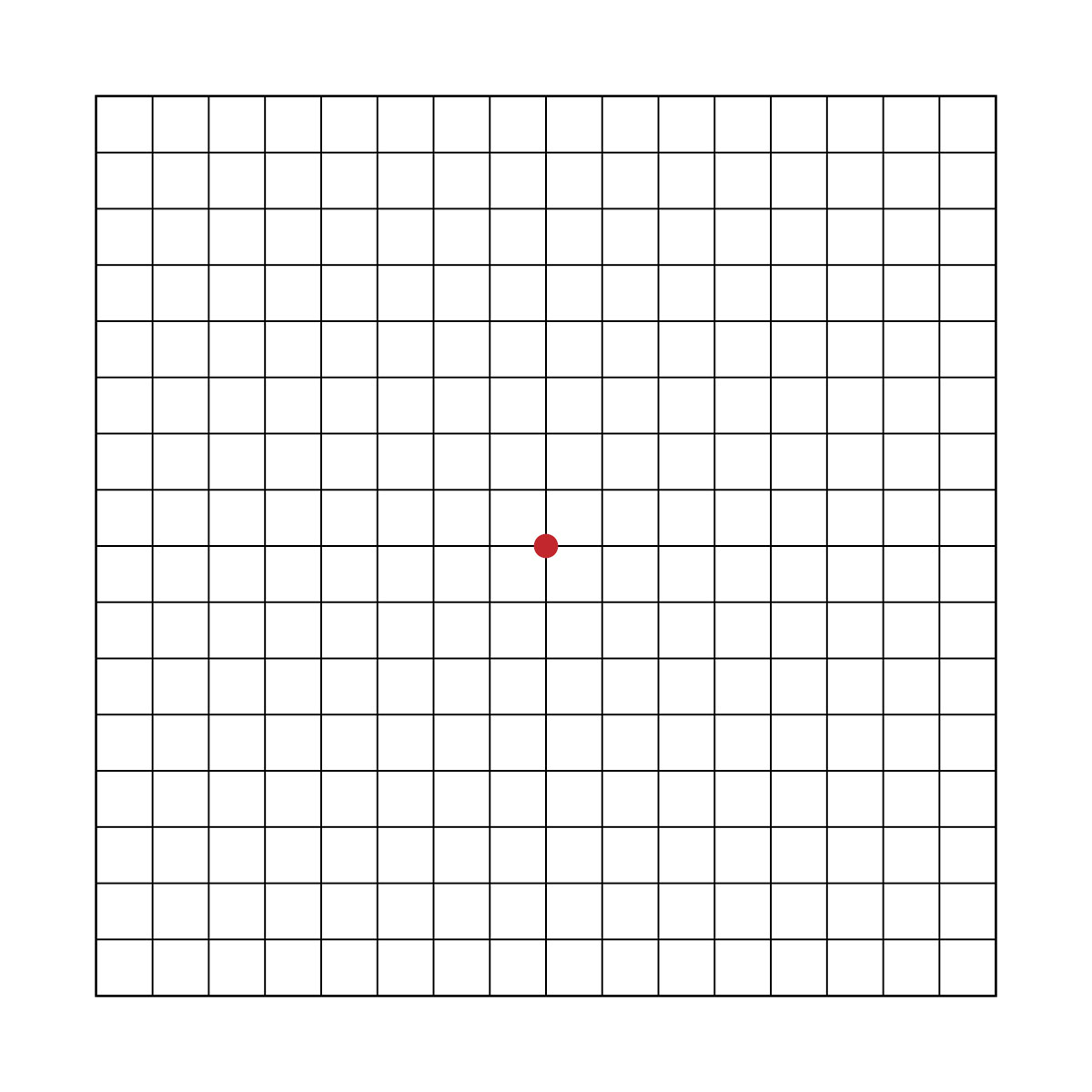Macular Degeneration
Macular degeneration is one of the leading causes of vision loss in the United States. It is a progressive disease that affects the macula, the center part of the retina, which is the back of the eye.
The retina absorbs light images and transmits these images in the form of a signal to the brain. To the extent that the retina, and the macula in particular deteriorates due to disease, injury, or the aging process, the quality of your vision will be negatively impacted.
Central vision is vital to perform common daily tasks A healthy macula helps us to experienced clear, so that we may perform tasks such as reading, driving, recognizing faces and seeing fine details.
Many people over the age of 60 develop macular degeneration as part of the natural aging process. There are many different types of medical conditions that affect the macula, but the most common is age-related macular degeneration (AMD). AMD is most common in people over 60, but can appear as early as age 40. If you are over age 60, an annual comprehensive dilated eye examination is important. This type of comprehensive eye examination can be key to the early diagnosis of serious medical eye conditions, including AMD.
Macular Degeneration Symptoms
Macular degeneration causes a loss of central vision, but not typically peripheral vision. In the early stages, it is not uncommon for patients to not notice any specific symptoms. As AMD begins to progress, you may experience:
- Blurriness
- Dark spots in your vision, generally in the central area of your vision
- Distortion of straight lines (typically straight lines or objects appearing wavy or crooked)
- Permanently lost central vision
Types of Macular Degeneration
Dry Macular Degeneration
Dry AMD accounts for over 90% of all cases of AMD, and often progresses slowly. Dry AMD is caused by the build-up of yellow drusen deposits under the macula that may cause the macula to thin, dry out, and scar.
Wet Macular Degeneration
Wet AMD is the more serious form of AMD that frequently causes severe, rapid vision loss in the absence of being diagnosed and properly treated. Wet AMD occurs when abnormal blood vessels grow under the macula. If these blood vessels leak blood or fluid, this will cause the macula to become distorted.
Why Does Macular Degeneration Occur?
Scientists do not know the precise causes of macular degeneration and why some people develop this disease, while others do not. Heredity, nutrition-related issues, race, smoking and UV light exposure may each play roles in increasing your risk for developing AMD. It makes sense to follow as healthy a lifestyle as you can to help protect your vision, including:
- Wear UV protection sunglasses when outdoors
- Eat a healthy diet
- Stop smoking
- Exercise
- Consider taking a high-quality AREDS-type vitamin supplement
Treatment for Macular Degeneration
While there is no cure for AMD, there are, however, some potentially very effective treatments that can slow or stop the progression of the disease. Some of these treatments may even reverse vision loss:
- Laser therapy may be used to destroy abnormal blood vessels or seal leaking blood vessels
- AREDS 2 (age-related eye disease study) vitamin supplements
- Anti-VEGF (vascular endothelial growth factor) injections have proven to be highly effective at reducing the risk of abnormal blood vessel growth
In the United States alone, over 200,000 cases of macular degeneration are diagnosed every year. AMD is estimated to affect 15 million Americans. Jaime Jiménez, MD, is the Pine Belt’s most experienced retina surgeon. No one in our region has successfully treated more patients with serious retina conditions, including AMD, than Dr. Jiménez.
Dr. Jiménez performs comprehensive dilated eye examinations to help diagnose some of the most serious eye conditions that a person may develop. Doing so enables him to recommend the best possible treatment options for each of his patients.
If you are experiencing any central vision problems, or if your family eye doctor has recommended a retina consultation, contact our office today to schedule your examination with Dr. Jiménez.
Amsler Grid Testing
Amsler grid testing is an at-home test designed to help detect changes in your vision, and can be an important indicator of changes in the health of your retina.
Instructions For Use
Test your eyes daily at the direction of your eye doctor to help detect possible changes in your eye health as early as possible. If you normally wear reading glasses to help with close-up work, you should wear them while performing this test. Proper lighting is also essential. The Amsler grid should be held at normal reading distance and should be tested while being held at this same distance each day.
- Focus on the dot in the center of the card. Cover one eye and continue to look at the dot for 10 seconds. Do not study it!
- If you have retina-related problems, the lines surrounding the red dot may not appear perfectly straight in each direction.
- With a pen or pencil, note any irregularities on the card, such as increased distortion, blurring, waviness, or blank spots. Indicate the approximate location of any irregularities you may notice on the grid.
- Repeat the test on the other eye with a separate grid.
- Call our office at (601) 264-3937 if you see any sudden or significant changes in your vision.
- Please download the printable version to place on your refrigerator.



